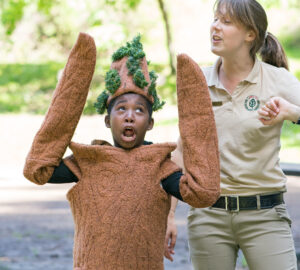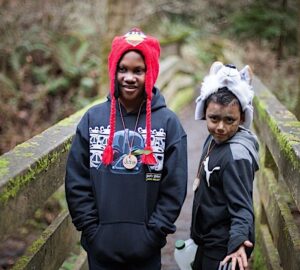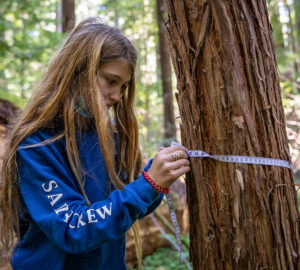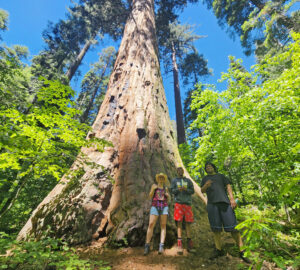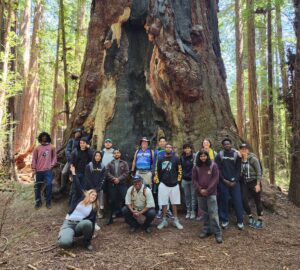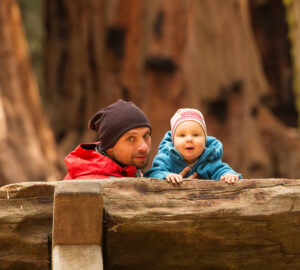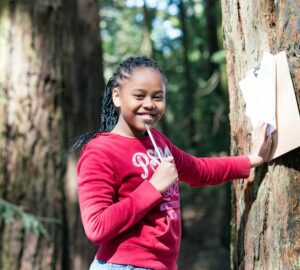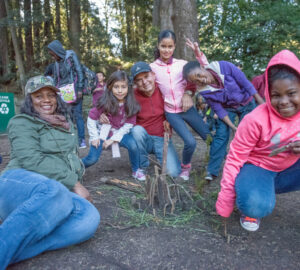Trees offer powerful lessons in patience, resilience, and community
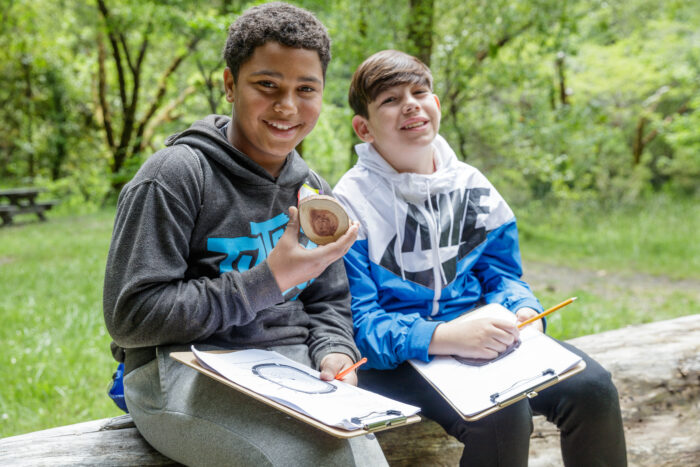
Growing up in eastern Virginia, I was surrounded by maples, hickories, and beeches—leafy in summer, ablaze with color in fall, and stripped bare against the winter sky. I remember a favorite teacher pointing out a skeletal branch in January and asking, “How do you know this tree without its leaves?” That question has never left me. It became a lifelong practice of paying attention.
I came to understand that trees aren’t just background scenery—they are living guides. They root us in place, stretch our sense of time, and offer lessons in resilience and connection. Trees shape our world in countless ways, and I believe every child deserves to feel that wonder.
As an educator with Save the Redwoods League’s North Coast Education Program, I’m able to share my love for trees and nature—especially our incredible redwood ecosystems. If I could pass along just 10 lessons about trees to the next generation, here’s what I would want them to know:
1. Trees Are Time Travelers
Every tree is a living timeline. Some grow for decades, others for centuries, and a few—like the coast redwoods and giant sequoias—stretch across millennia. When you place your hand on a tree trunk, you are touching time itself, held in rings of wood that record fire, flood, and drought. Trees remind us of the power of patience.
2. Trees Speak a Silent Language
Though they stand rooted, trees are far from mute. Beneath the soil, their roots connect with fungi in vast networks to share water and nutrients—a system some call the “wood wide web.” A tree under stress can signal to its neighbors, and healthy ones often lend resources to seedlings. A forest is a community, not a competition.
3. (Some) Trees Burn and Return
In many forests, fire is not destruction but renewal. Oaks, pines, and redwoods have evolved with flames that clear the underbrush and make way for new growth. Indigenous peoples have long understood this relationship, using cultural burning to steward healthy landscapes. Trees teach us that disturbance can also bring resilience and increased biodiversity.
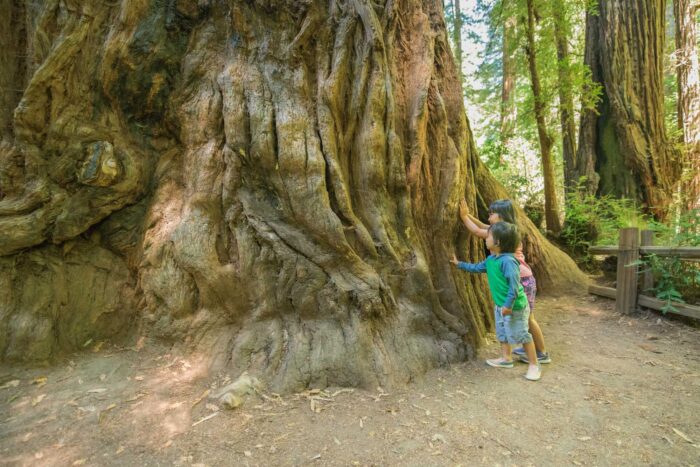
4. Trees Breathe With Us
Trees inhale what we exhale. The carbon dioxide that leaves our lungs is drawn into their leaves, where it is transformed into sugar and wood. In turn, trees release the oxygen that we humans depend on. It’s an ancient exchange that links every breath we take to forests.
This process—called photosynthesis—is the most important chemical reaction on Earth. And beyond fueling life, trees act as massive carbon banks, locking away impressive amounts of planet-warming carbon in their trunks, roots, and soil. Old-growth coast redwoods are the champions, storing more carbon per acre than any other forest on the planet.
5. Trees Wear the Seasons
My high school teacher taught me to understand trees in the language of the seasons. A bigleaf maple in October blazes yellow, but by February it speaks only in twigs and papery gray bark covered in thick moss. Evergreens such as redwoods may seem more static, holding their green color throughout the year, yet they too have their rhythms. In spring the tips of their branches flush with sprays of bright new growth—a soft green against the darker mature needles. Knowing trees through all their seasons reminds us that change is natural.
6. Trees Know Their Home
Each tree belongs to a particular home. Willows lean toward rivers, bristlecone pines rise from dry slopes on some of the highest mountains in the West, and coast redwoods thrive in fog-laced landscapes near the Pacific Ocean. Learning to recognize a tree means learning its story of soil, climate, and water. Trees teach us that belonging comes from relationship with place.
7. Trees Shelter Life
Every tree is a habitat. Birds nest in their branches, squirrels cache acorns in their hollows, lichens cling to bark, and fungi weave through their roots. Even a fallen log is not dead but bustling with beetles, salamanders, and moss. To know trees is to see them as cities of life.
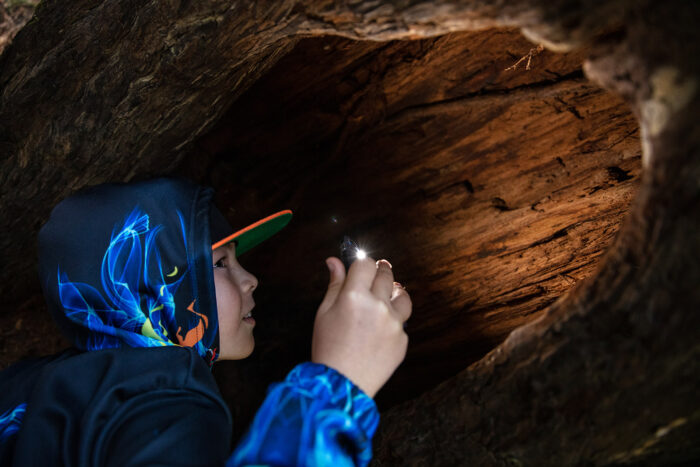
8. Trees Invite Us to Wonder
There’s a kind of magic in watching a sycamore’s patchy bark glow white under moonlight. Or standing beneath an ancient redwood, craning your neck toward a canopy that disappears into mist. These moments spark awe—and awe is the seed of stewardship. When we fall in love with trees, we begin to care for the Earth.
9. Trees Connect Us to Culture
For thousands of years—and still today—Native peoples have turned to trees for food, medicine, tools, and inspiration. Oaks continue to offer acorns that nourish Tribes in California, just as western redcedars are still carved into canoes and ceremonial objects by Tribes in the Pacific Northwest. Trees are living relatives—providers and teachers—and when we learn their gifts, we step into an ongoing lineage of respect and reciprocity.
10. Trees Show Us the Forest
Perhaps the most important lesson: Never forget to see the forest through the trees. Each trunk is a story, but together they weave a larger narrative—of ecosystems, watersheds, and climate. A single redwood is extraordinary, but a redwood forest is a cathedral of interdependence. Trees remind us that our lives, too, are strongest when entwined.
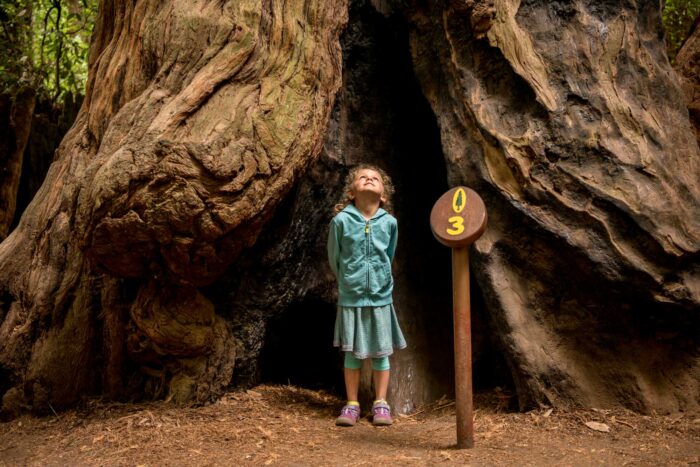
Michael Kauffmann is an educator, author, and ecologist based in Humboldt County. His newest book, co-authored with Matt Ritter, is California Trees: A Field Guide to the Native Species.

